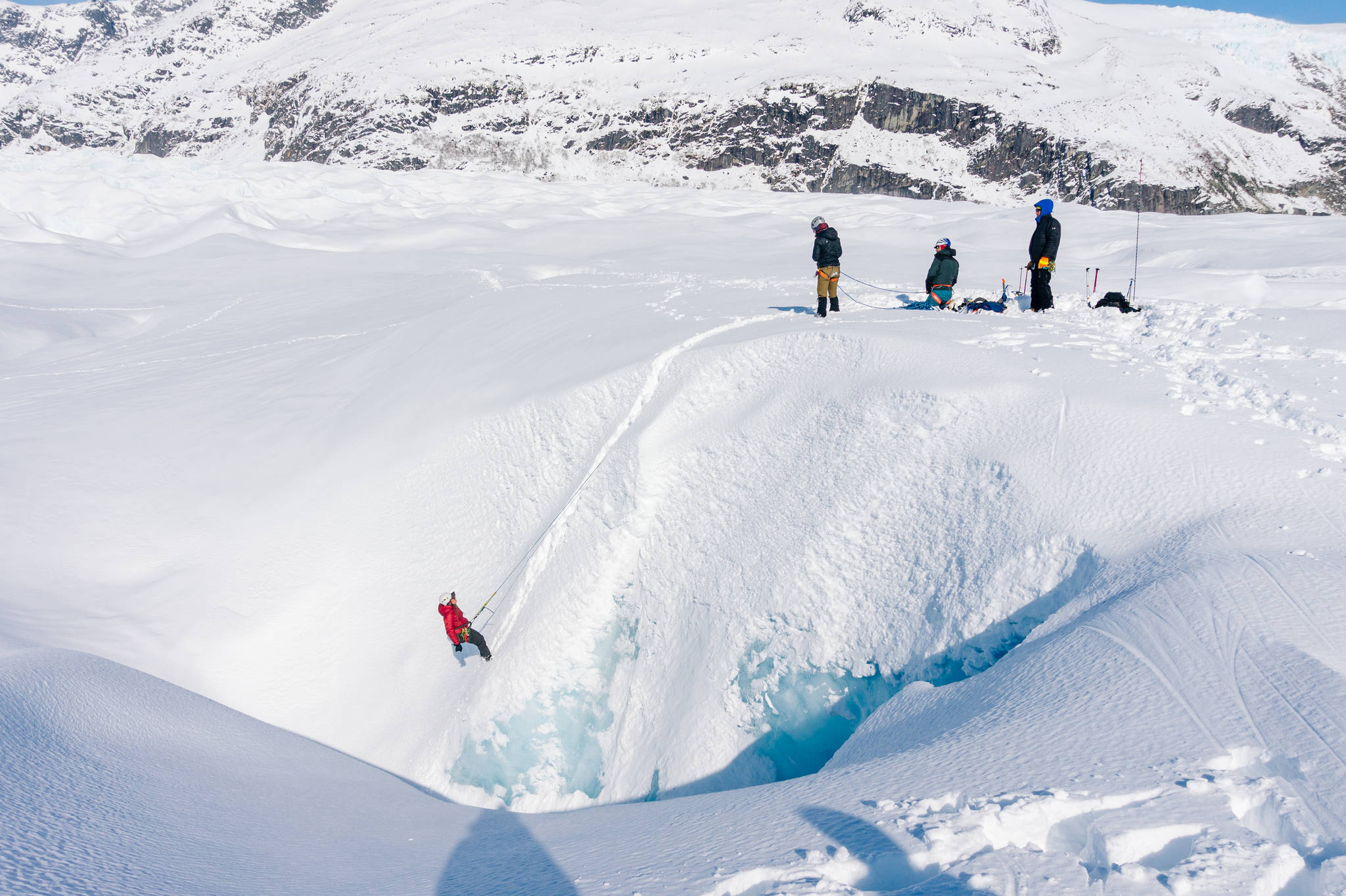While many were celebrating Easter and Passover with loved ones this past weekend, the University of Alaska Southeast sent its Glacier Crevasse Rescue class to the Mendenhall Glacier for their final three-day outing. This was the last chance for the students to practice their recently-learned glacier travel skills.
It is a strenuous and intense effort for instructors, teaching assistants and students alike. UAS Outdoor Studies graduate Sammy Becker is the course instructor. She has logged hundreds of hours on the Juneau Icefield and is a partner in Alaska Powder Descent heli skiing.
The weather was glorious. We got three straight days of sunshine.
The trip was a combination of three efforts: packing gear for mixed terrain, working effectively in a winter camping scenario, then practicing travel and rescue skills on the glacier.
We hiked out to the second icefall on the Mendenhall Glacier. Then we set up camp on the ice at a site used in the summer by North Star Trekking, a glacier tourism guiding company. The hike out the West Glacier Trail is a little over four miles, which is considered easy by our adventurous group. However, we were hefting 60-pound packs and were met with ice on the approach to the glacier, so it was an arduous but short haul.
The group learned how to properly travel while roped together on the surface of a snow-covered glacier, and how to rescue someone from a crevasse. If you are the fallen climber and remain conscious you need to self-ascend once your partners have fixed the rope. To rescue a fallen teammate who’s injured, the remaining rope team builds a snow anchor and mechanical advantage system. We stay roped up together so that if one person falls in, the rest of the people on the rope team can self-arrest their fall.
Oh, and not a donut hole in sight! It was horrible. I’m still filled with regret. My snacks were boring: Cheez-Its and Clif Bars. I think next time I might pull a “Seth and Timmy” and only bring Snickers bars for three days.
For most of us, cooking for the weekend consisted of boiling snow and mixing it with freeze dried pre-packaged meals. So often people frown at these but I really like them. It’s a full meal in a bag that you don’t have to waste time to prepare. My favorite is undercooked, watery Pasta Primavera.
Sleeping on a giant sheet of ice is cold (haha). The default guideline for camping on snow is to use both open- and closed-cell sleeping pads underneath a super warm sleeping bag.
You’re not allowed to poop on the glacier. Unlike the forest, there is no where for it to go. So typically we bring wag bags that we have to pack out and dispose of when return to the frontcountry. These are basically resealable plastic trash bags that have a chemical inside called Poo Powder® that acts as a deodorizing agent. Yay!
Out on the icefield, extreme precaution is taken to protect your eyes. The sun up there is so intense, it’s difficult to describe. Sun reflection bouncing off the snow can ruin your eyesight. Ice aficionados sport special sunglasses that provide additional protection by masking the sides of the eyes to guard against the glare. #iceclimberaesthetic
The days were bright, and the wind was not bad at all. Temperatures hovered around 35 degrees in the day, 30 at night. Setting up camp and walking around was quite pleasant, with our warm gear. Some with their boujee Arcteryx layers, and some with their hardware store gloves and Fred Meyer fleece, both equally as effective.
• California-born and Alaska-bred, Gabe Donohoe has taken photos daily for the past five years. He is currently a student of the University of Alaska Southeast’s Outdoor Studies program. His photo archives can be seen on www.gabedonohoe.com. “Rainforest Photos” photo blog publishes every other Friday in the Empire’s Outdoors section.

